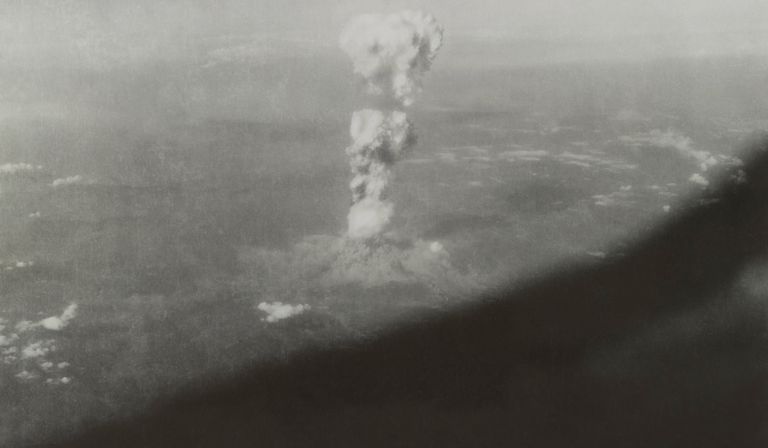In recent months, two nuclear-armed states, India and Pakistan, came to the brink of war; and two nuclear-armed states, the United States and Israel, bombed a third country, Iran, with the express aim of ensuring it could not weaponise its nuclear programme. Both crises were de-escalated, though in neither scenario has the underlying conflict been resolved. In the Middle Eastern case, de-escalation came only after hundreds of people had died.
Managing the nuclear threat has been central to the multilateral system since its founding at the end of the Second World War. But both non-proliferation and multilateralism are now under strain. These recent episodes are a warning: the systems that for decades have protected us from nuclear war are at risk amid growing insecurity and a trend towards exceptionalism.
In August, the world will mark 80 years since the atomic bombings of Hiroshima and Nagasaki. The catastrophic nature of the weapon was clear even before those bombings. That is why the debut resolution of the UN General Assembly, which met for the first time in London in January 1946, called for the elimination of atomic bombs, verified through inspections, and for international scientific exchange to ensure nuclear energy was used only for peaceful purposes.
The Non-Proliferation Treaty (NPT), signed in 1968, built on these principles. It has three pillars: no new countries should obtain nukes; every country should have the right to the peaceful uses of nuclear technology, for instance for energy production; and the five nuclear-armed states under the treaty should negotiate full and complete multilateral disarmament. But the nuclear-armed states are not delivering on that third pillar. And Europe’s newly hardened stance on Iran is putting the second pillar in doubt.
The NPT boasts some remarkable achievements. Non-proliferation has largely held: four more countries have nuclear weapons today than in 1945—India, Pakistan, North Korea and Israel—but most states eschew them. The world has so far been able to prevent nukes being transferred to armed groups, a longstanding fear. Not every country would want them anyway; nukes are expensive, risky and too big and toxic for most security problems. States with nuclear weapons say they have them to deter attacks from other nuclear-armed states. That means, however, that once some countries have them, others will want them too—especially if those that have them engage in aggression. This is precisely the dynamic that the NPT was designed to prevent.
The treaty has been bolstered by agreements to keep Antarctica, outer space and the seabed free of nuclear weapons, and the establishment of regional nuclear-free zones in Africa and Latin America, the latter created in response to the 1962 Cuban missile crisis. That episode, prompted by the discovery of Soviet nuclear weapons stationed in Cuba, is still seen as the closest the world has come to nuclear war. As leaders peered into the abyss, they realised they needed an alternative.
A UN conference on making the Middle East free of weapons of mass destruction has been held annually since 2019, but without Israeli participation it cannot progress. In that region, people often argue that it will be impossible to advance nuclear disarmament unless security conditions improve and conflicts are resolved. Africa and Latin America show a different way is possible: countries can manage without nukes. South Africa and Libya both had nuclear arms programmes and gave them up, each in the context of larger transformations of the state itself (as in South Africa, 1989) or relations with the rest of the world (Libya, 2003).
In Europe and Asia, the NPT bargain has been bolstered by the US’s willingness to underwrite its allies’ security. Now, with US security guarantees in question, numerous countries, from South Korea to Poland, are openly wondering whether they should have nuclear weapons themselves.
Meanwhile nuclear-armed states are increasing their nuclear arsenals. Russia hinted at using nukes in Ukraine, and has hundreds of so-called “tactical nuclear weapons”. Tactical does not necessarily mean smaller—some tactical nukes have more explosive potential than the atomic bombs dropped in 1945. The term refers to weapons that could be used on a local battlefield, like Ukraine, as opposed to attached to ballistic missiles aimed thousands of miles away at, for instance, US cities. In late 2022 there were real fears that the Kremlin might think it could use a tactical weapon to force Ukraine to surrender without drawing the US into a scenario of mutually assured destruction. Russia has not yet taken that disastrous step; the Ukraine war has not posed an existential threat to Moscow, while using a nuke would probably upset China.
Russia’s nuclear threats accelerated a pattern that already existed: rearmament. China is rapidly building its nuclear stockpile and could have 1,500 warheads by 2035—close to what the US and Russia can use at short notice. The UK’s Strategic Defence Review emphasises a need for nuclear weapons modernisation—its co-author George Robertson, a former Nato secretary general, has long said the UK should be “loud and proud” about its nukes. There is also talk in the US of a potential return to explosive nuclear testing, which all countries except North Korea have refrained from for nearly 30 years.
If the world is entering a multipolar nuclear age, deterrence will be complicated by new calculations about alliance-building between multiple nuclear states. Dr Strangelove caricatures aside, deterrence specialists in defence ministries appreciate the need for a deep strategic understanding of the other side, of how the enemy could destroy what the other holds most dear. States are acutely aware of the risks of guessing wrong.
Experts warn that the Israeli and US attacks on Iran’s nuclear programme may backfire badly
The US is already preoccupied with whether it might need to deter a nuclear-armed Russia and a nuclear-armed China at the same time. Any further proliferation would complicate the calculus. What would a nuclear-armed Iran mean for Pakistan and India, which have repeatedly come alarmingly close to all-out war? Is India now eyeing a need to balance China’s nuclear programme, as well as Pakistan’s? Imagine a Middle East with multiple nuclear states, such as Saudi Arabia, Egypt and Turkey, alongside Iran and Israel.
In the west, some think that we have ourselves handcuffed by obeying treaties and rules, while our adversaries fight unconstrained. But this neglects the uncomfortable fact that western countries (and their allies) do not always follow international law.
In June, the western discussion of nuclear policy came to a point where the US would not rule out using nukes to hit Iran’s nuclear facilities, which looked increasingly capable of making a bomb but which weren’t actually thought to be working on one. The Center for Strategic and International Studies, a foreign policy thinktank in Washington, even suggested that one of Israel’s options could be to drop a nuclear weapon on Iran’s Fordow reactor.
Instead, the US and Israel used large-scale conventional bombs in Iran. Now non-proliferation experts are warning that these attacks may backfire badly. It is unprecedented for two nuclear-armed states to attack another country’s nuclear technology sites while those facilities were subject to international monitoring under the NPT. European countries have plenty of issues with Iran, but the UK, France, Germany and the European Union were at the centre of trying to protect the multilateral nuclear deal, the Joint Comprehensive Plan of Action (JCPOA), which was finalised in 2015. Now they seem largely unable to say anything about Iran’s NPT rights or the recklessness of bombing nuclear sites.
For some years, non-proliferation experts have worried that the existence of the NPT itself may be at risk. If so, should it be revived or replaced? One response was the 2017 Treaty for the Prohibition of Nuclear Weapons, whichproponents say is designed to implement the commitment to disarmament already enshrined in the NPT. Since the attacks on Iran, the debate has intensified. Some say the NPT is outmoded. Others argue an imperfectly enforced agreement is better than nothing.
Iran says it may leave the NPT. That could trigger others to do the same. Or the current moment could be seen as an opportunity to save it. Whatever transpires, it might just become obvious that diplomatic, multilateral approaches are fairer and more effective than force. The UN was born out of catastrophe, modern arms control from a combination of catastrophe and near-miss. It would be better to imagine the abyss and step away from it than to rediscover the need to cooperate out of desperate necessity—after a future nuclear war.











